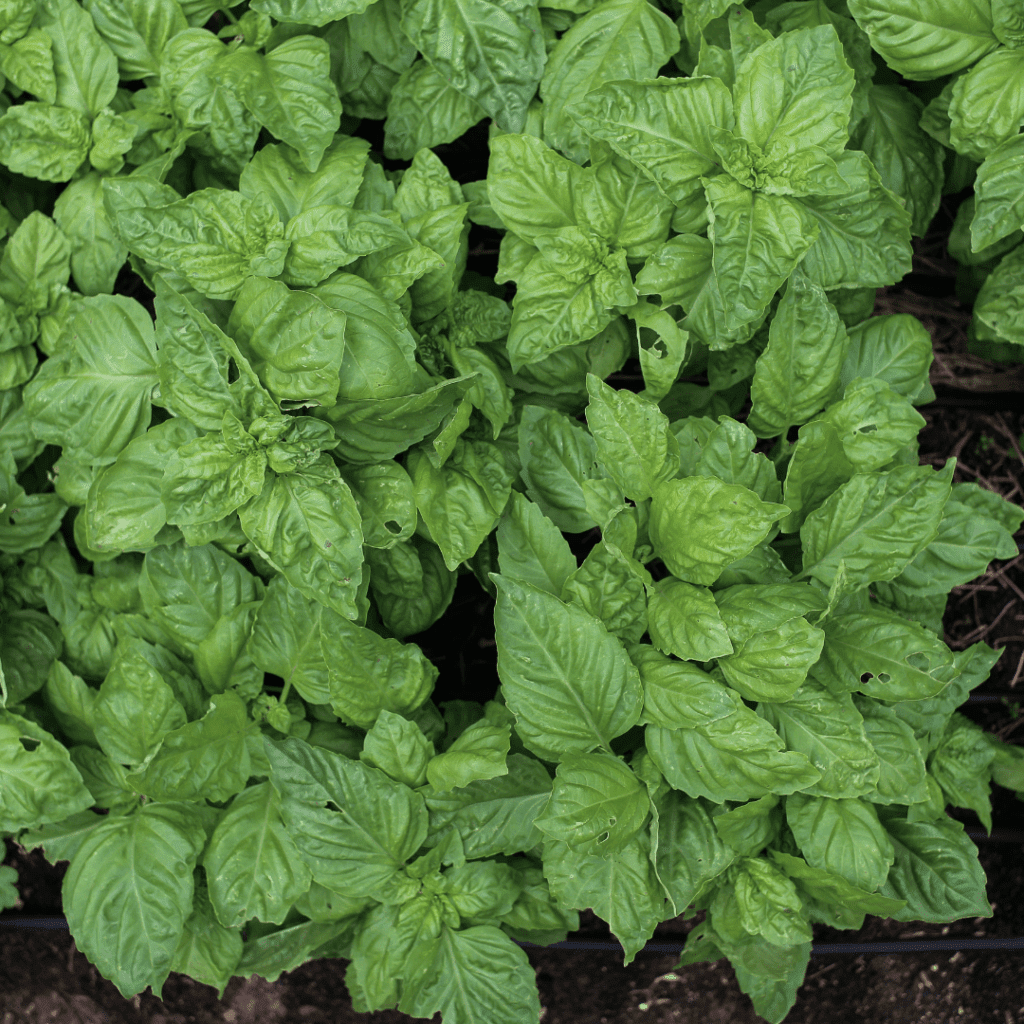Natural pain relievers.
What Is Included in This Post:
Understanding Natural Pain Relievers
Common Pain-Relieving Herbs and Plants
Preparing Natural Remedies at Home
Incorporating Natural Pain Relievers into Everyday Life
In recent years there has been an increasing shift toward understanding and utilizing natural pain relievers. As the general populace continues to explore alternatives to mainstream pharmaceuticals, the realm of herbal and plant-based remedies offers a vast array of solutions that can serve as vital tools in a variety of scenarios, primarily in instances of disaster preparedness and survival situations. Navigating the world of natural pain relievers requires not just knowledge of these plants and herbs, but an understanding of how they can be adapted to a modern lifestyle. This discourse seeks to bring to light key natural pain relievers, how one can grow, harvest, and process them at home, and practical tips on integrating these into daily life.
This is a pinnable post. Tap or hover over any image in this post to pin to your Pinterest Boards.
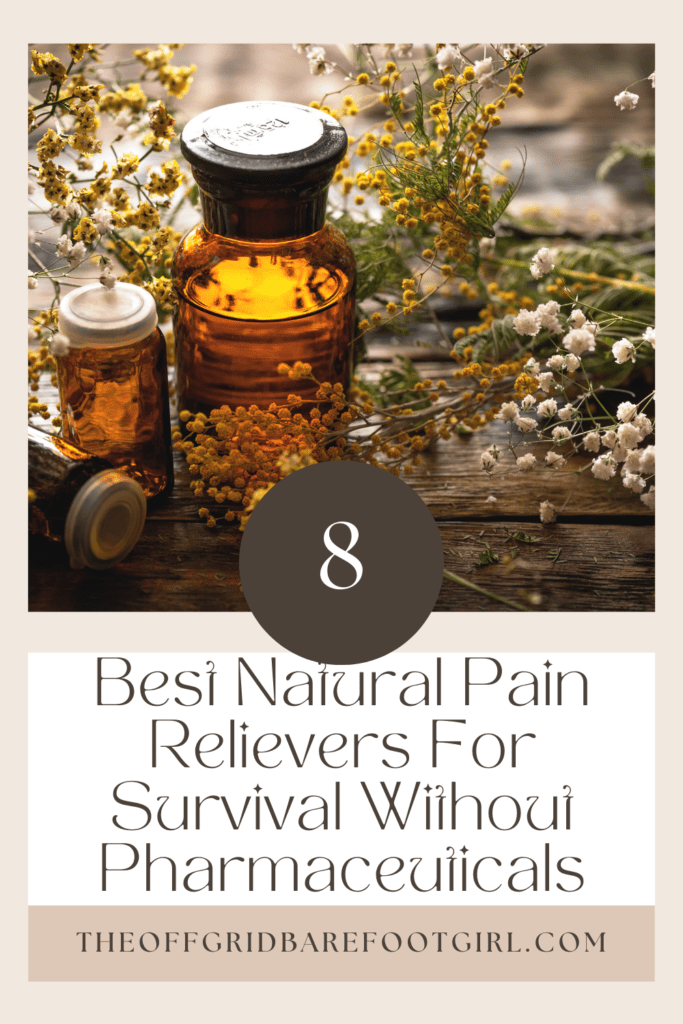
Understanding Natural Pain Relievers
Understanding Natural Pain Relievers
Natural pain relievers are substances derived from various plants, animals, or elements in the environment that have the potential to alleviate discomfort or pain without the use of synthesized pharmaceutical drugs. They have been used for centuries in many cultures to treat an array of ailments before modern medicine introduced pills and injections. Natural pain relievers encompass a wide range of substances from herbs and spices to certain types of foods and lifestyle choices.
Moving on to the contrast between natural remedies and mainstream pharmaceuticals; the most significant difference is in their composition. Mainstream pharmaceuticals are typically synthesized in laboratories and contain a large number of concentrated, refined, and often synthetic components. On the other hand, natural pain relievers are often less refined, utilizing the entirety of the plants or animals from which they are derived.
This distinction leads to a significant point of contention between advocates for each methodology. Pharmaceutical drugs often have potent immediate effects and are subjected to rigorous testing before they reach the general market. Despite this, they can come with unwanted side effects and potential dependencies. Natural remedies may not act as swiftly, but often have fewer side effects and virtually no potential for physical addiction.
Why Natural Pain Relievers Are Important for Survival Situations
When it comes to survival situations, having access to natural pain relievers can be a game-changer. In such challenging circumstances, where conventional medical care may not be readily available, relying on natural remedies becomes crucial. Natural pain relievers offer several advantages in these scenarios. Firstly, they are often easily accessible and can be found in the environment around us. From plants like willow bark and cloves to substances like honey or ginger, nature provides us with numerous options that can help alleviate pain.
Additionally, natural remedies tend to have fewer side effects compared to synthetic drugs, making them safer and more dependable choices for self-treatment during emergencies. Moreover, considering the potential scarcity of traditional medication resources during survival situations, knowing how to identify and utilize natural pain relievers is a valuable skill that enhances our ability to endure and overcome adversity when medical aid might not be an option.
Natural pain relievers play a critical role in survival and preparedness scenarios. In the event of a disaster where access to modern health facilities and pharmaceutical supplies is cut off, understanding and utilizing natural pain relievers can make a significant difference in managing pain. Also, natural pain relievers can often be sourced from the immediate environment, making them a sustainable choice for prolonged survival scenarios.
However, it’s crucial to note the importance of knowledge and correct application when using natural remedies. Misidentification of plants or incorrect dosage can lead to poor results or even harmful effects.
Key Principles in Herbal and Alternative Medicine
The primary principle behind herbal medicine relates to holistic wellness. It emphasizes the body’s inherent ability to heal and maintain itself given the right support from nature. Herbal medicine aims to restore this equilibrium using naturally occurring plants and substances.
All-natural therapeutics can be safer, with fewer side effects compared to conventional drugs. However, this doesn’t completely rule out potential allergic reactions or the possibility of an unforeseen outcome due to complex medical histories or conditions.
Various herbs have potent medicinal properties, and knowledge of these can be essential in a disaster or survival situation. Some natural pain relievers include willow bark, turmeric, cloves, and even heat and cold treatment. Each comes with its own benefits and potential applications, symbolizing the diverse array of tools available in the world of natural pain relief.
Consequently, even if it seems difficult to entirely eliminate the usage of pharmaceuticals, educating ourselves about natural remedies could drastically alter our chances of survival in times of calamity or crisis scenarios. Integrating alternative methods for pain relief and healing in our preparedness can prove to be a game-changer.
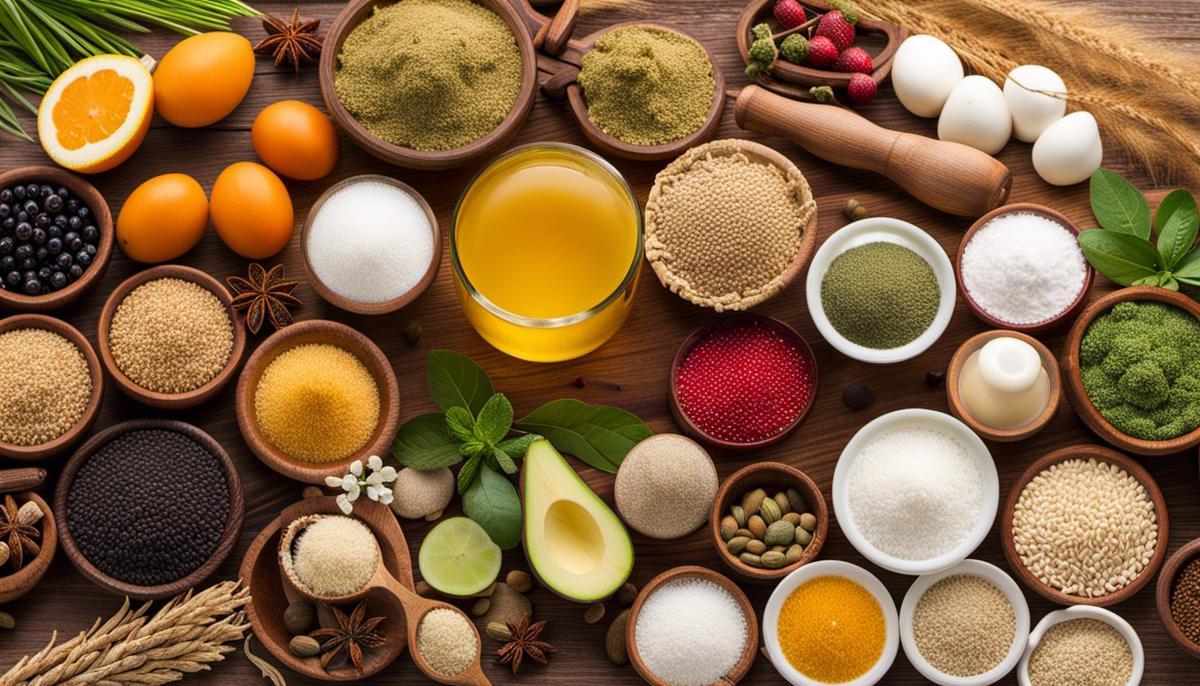
Common Pain-Relieving Herbs and Plants
1. The Ancient Remedy of Valerian Root for Modern Pain Management
Whilst sounding like something from a history book, for hundreds of years, people have turned to Valerian root as their go-to natural painkiller. This ancient remedy is renowned for its capacity to pacify the nervous system, rendering it particularly helpful in handling afflictions such as migraines and headaches. Cutting-edge research suggests that Valerian root potentially augments the level of a neurochemical termed gamma-aminobutyric acid within the brain. This chemical alters communication within the brain, mitigating nerve excitability. Despite being a natural product, Valerian root must be used judiciously. Accumulation from excessive intake could culminate in side effects like headaches, gastrointestinal distress, impaired cognitive function, and lethargy during the daytime.
2. Willow Bark: Nature’s Aspirin
Often referred to as “nature’s aspirin,” willow bark has been used across the globe to relieve pain and reduce inflammation since the time of Hippocrates. Scientists understand it contains the compound salicin, which your body can convert to salicylic acid, a precursor of aspirin. It can help ease lower back pain and osteoarthritis. However, one should use willow bark with caution as overdosing can cause rashes, stomach upset, and kidney inflammation.
3. Clove: A Natural Remedy for Toothache
Clove oil has been traditionally used to alleviate dental pain, thanks to its rich concentration of eugenol, a natural anesthetic. Modern studies have confirmed its antibacterial and anti-inflammatory effects, making it effective in treating toothaches and gum diseases. However, undiluted clove oil may cause skin irritation, and it should not be ingested in large quantities due to potential side effects such as nausea, vomiting, and even liver damage.
4. Cayenne Pepper: A Spicy Solution to Pain
Cayenne peppers are an excellent source of capsaicin, a substance used in many over-the-counter pain relief creams. When applied topically, capsaicin can help relieve pain from arthritis, shingles, or neuropathy. Scientific research has shown that capsaicin helps to reduce the amount of substance P, a chemical that carries pain messages to the brain. However, one should be aware of potential skin irritation, burning, and itching that may occur upon application.
5. Ginger Root: More than Just a Kitchen Spice
In addition to its culinary uses, ginger root has been used throughout history to manage pain and inflammation. Today, it’s commonly used to alleviate muscle pain, menstrual pain, and inflammation. Some studies suggest that ginger may work by blocking inflammation-causing compounds in the body, but more research is needed. Ginger root is generally safe to consume, but can sometimes cause mild side effects such as diarrhea.
6. Turmeric: The Golden Pain Reliever
Turmeric, a gastronomic staple in Indian cuisine, contains a compound called curcumin that may help reduce inflammation and combat pain, particularly associated with arthritis and gastrointestinal distress. Although generally considered safe, high dosage or long-term use of turmeric may cause gastrointestinal problems. Therefore, it’s recommended to introduce turmeric in small amounts to determine tolerability.
7. Arnica: Topical Agent for Bruises
Arnica, a European mountain daisy, has been used for centuries in natural medicine as a topical relief for muscle soreness and bruising. The healing properties of arnica are attributed to its anti-inflammatory and antibacterial activities. However, it should not be taken orally due to potential irritation and inflammation of the mouth and throat.
8. Peppermint: A Natural Pain-Reliever
Peppermint is not just a plant with a pleasant menthol scent – it’s a natural source of pain relief. This natural property has proven effective in easing headaches, muscle discomfort, joint pain, and even soothing digestive problems. However, it’s critical to dilute peppermint oil prior to use as it may irritate the skin. Caution should also be practiced with internal usage, as overuse can result in heartburn or allergic reactions.
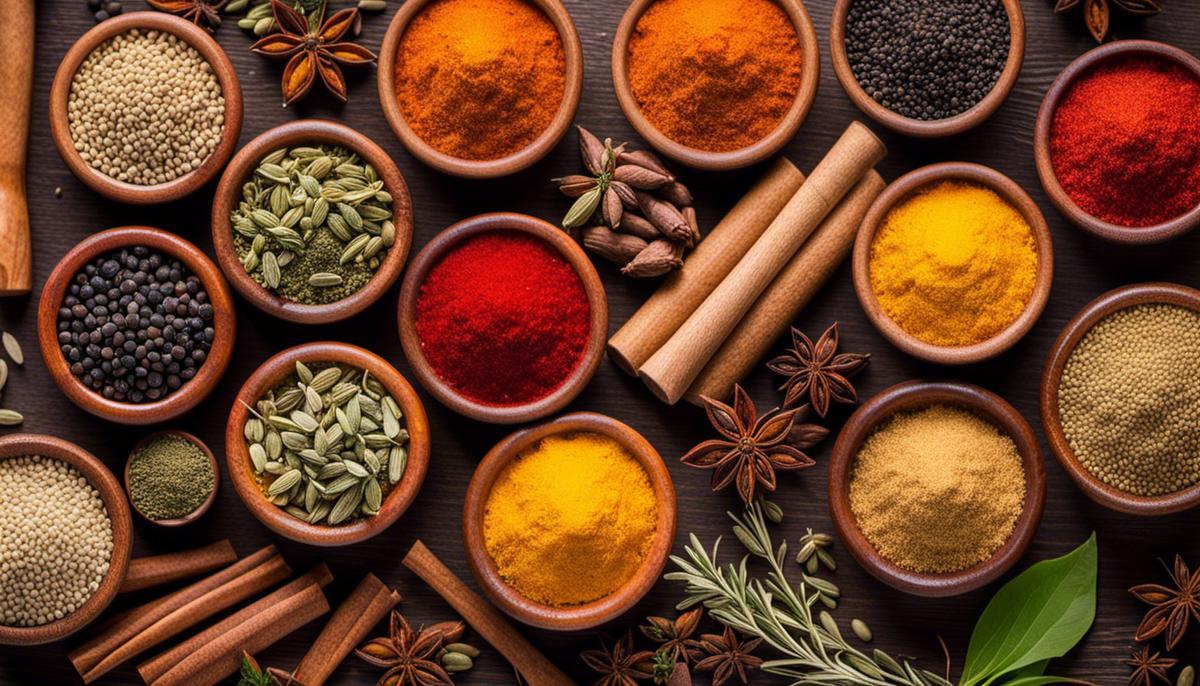
Preparing Natural Remedies at Home
Learn to Identify Healing Plants
Before moving ahead, it’s crucial to know how to identify plants that can provide natural pain relief. Some beneficial plants to go for include willow bark, turmeric, cloves, heat-capsaicin, and lavender. Being familiar with their appearance could be incredibly useful, especially when you need to locate them in the wilderness. Plenty of resources, including gardening books and online guides, offer comprehensive information and images of these medicinal plants.
Growing Pain-Relieving Plants
Growing these plants at home can be highly rewarding and a significant step towards self-sufficiency. Having them readily available can ensure that you have a natural pain relief option at your disposal. Many of these plants can be grown in your backyard or even in pots indoors.
For instance, willow trees prefer a sunny location and moist soil. On the other hand, turmeric can be grown in pots and needs warm temperatures and considerable water. Cloves are typical spices derived from dried flower buds of the clove tree. If you live in a warmer climate, you may be able to grow a clove tree. Lavender is a hardy plant that can be grown in most gardens with well-drained soil and full sun exposure.
Harvesting Pain-Relieving Plants
It’s critical to harvest these plants correctly to get the maximum benefit. Carefully follow information from reliable sources on the right time and method to harvest each plant.
For willow bark, you would harvest in the spring when the sap is running up from the roots. The bark comes off easily, and the inner bark, or cambium, is what you want for medicinal use.
Turmeric is typically harvested nine to ten months after planting, and the entire plant, including the roots, is dug up. The essential oils are present in the roots or rhizomes, which need to be boiled, dried, and ground into a powder.
Cloves can be harvested when the buds are fully developed with a pink hue. They are usually dried before use. Lavender, on the other hand, should be harvested when the flowers are fully bloomed for maximum fragrance and essential oils.
Prepare Natural Remedies in Different Forms
After harvesting, you can prepare these plants in various forms for pain relief.
Willow bark can be dried and made into tea or tincture for oral consumption. Its primary active compound, salicin, is converted into salicylic acid in the body, acting similarly to aspirin for pain relief.
Turmeric powder can be added to meals or beverages. It is also often made into a paste for topical application in pain areas. The main active ingredient in turmeric, curcumin, has potent anti-inflammatory properties.
Cloves can be made into an oil for topical application, especially for toothaches since they have natural anesthetic properties.
Capsaicin, derived from hot chili peppers, can be made into a cream for topical application. It works by decreasing substance P, a compound that helps transmit pain signals, thereby reducing pain sensation.
Lavender, known for its calming and soothing properties, can be made into an oil for aromatherapy or topical application.
Broader applications of these plants include teas, creams, oils, capsules, and even bath additives.
Packing and Preserving Natural Pain Relievers
In order for your natural pain relievers to keep their healing properties, they must be stowed away correctly. Herbs in their dried form or ground into powders should be placed in containers that can be sealed tightly. Store these in a place that is dry, cool, and shielded from light. Also, creams, oils, and tinctures need to be kept in a setting that’s cool and out of direct sunlight to prevent them from breaking down.
Just like any well-stocked pantry, your natural remedies will have best-before dates. Use them within their potency window to get the most health benefits. To make things easier for future reference, always write the date you made it and the use-by date on every stored remedy.
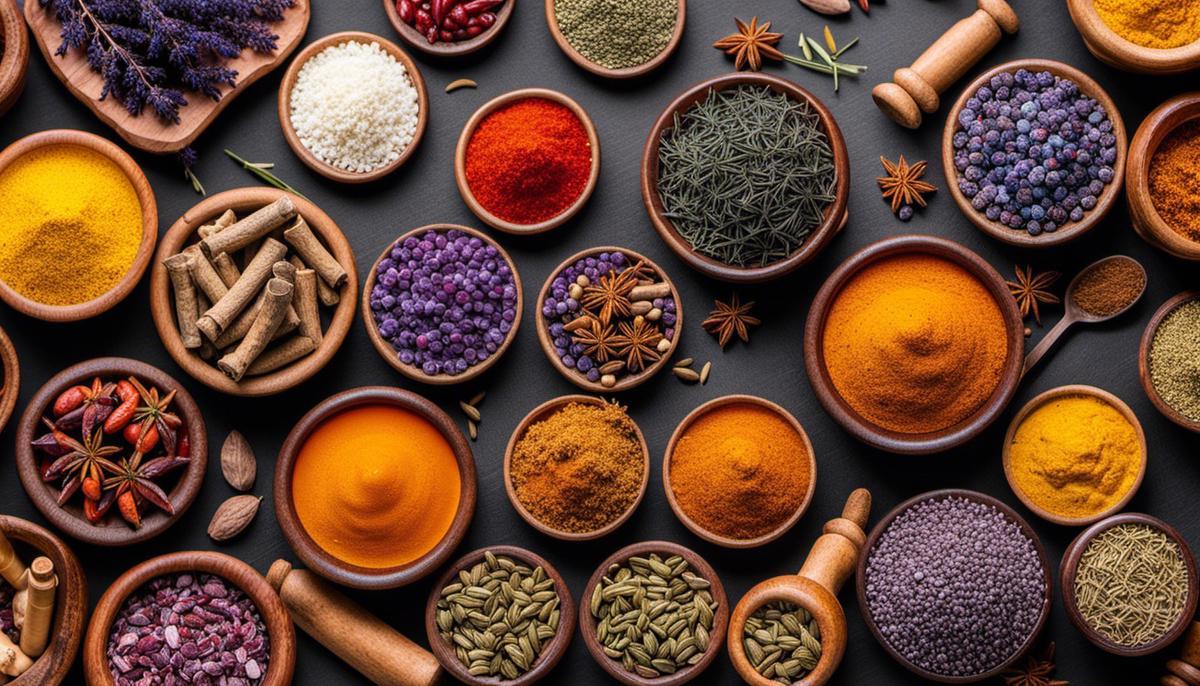
Incorporating Natural Pain Relievers into Everyday Life
Adopting Lifestyle Habits for Natural Pain Relief:
The journey toward decreasing dependency on pharmaceuticals could start with modifying daily habits. While it might sound like a broken record, regular exercise is indispensable. Not only does it help you stay fit, but it also aids in the production of endorphins. These are known as ‘feel good’ hormones that tackle pain and stress naturally. Even a simple activity like a half-hour walk can help combat discomfort.
Next, tweak your diet to include more foods known for their anti-inflammatory benefits. Incorporate more fatty fish, berries, broccoli, avocados, green tea, peppers, mushrooms, grapes, turmeric, cherries, and spinach into your meals. On the flip side, try to limit your intake of processed foods, excess sugar, and unhealthy fats known to worsen pain.
Learning to Listen to Your Body:
Tuning into your body’s signals is another essential tactic. Be aware of what triggers your pain or what eases it. Note how your body responds to different foods, exercises, and stress levels. Mindfulness and meditation can support this body awareness, providing a mental space to observe and interpret your body’s signals without judgment.
Deep breathing exercises can further relieve chronic pain. Controlled breathing signals your body to relax, countering the fight-or-flight response often associated with pain, while also releasing endorphins.
Exploring Natural Supplements:
Various natural supplements can serve as pain relievers. Omega 3 fatty acids (found in fish oil and flaxseeds) can reduce joint pain and stiffness. Capsaicin, a chemical found in hot chili peppers, can desensitize nerve receptors and alleviate pain. See a professional before beginning any supplement regimen to best understand its potential effects.
Seeking Professional Advice:
While natural pain relief can be effective, it’s important to seek professional advice if your pain persists or intensifies. Health professionals can guide your transition from pharmaceuticals to natural methods, offer personalized advice, and ensure there are no harmful interactions between your existing medications and your new natural regimen.
Practicing Proper Sleep Hygiene:
Never underestimate the healing power of sleep. Chronic sleep deprivation can contribute to higher levels of pain, making it essential to establish healthy sleep habits. Avoid caffeine and electronic devices close to bedtime, and try to maintain a consistent sleep schedule. That means going to bed and waking up at the same time every day – even on weekends! Next up, create an ideal sleep environment. Make sure your bedroom is cool, dark, and quiet. Banish any distractions like electronics or noisy neighbors.
Another crucial aspect is winding down before hitting the hay. Avoid stimulating activities such as vigorous exercise or scrolling through social media right before bedtime. Instead, opt for calming rituals like reading a book or taking a warm bath. Lastly, watch what you eat and drink close to bedtime. Stay away from caffeine and heavy meals late in the day as they can interfere with your ability to fall asleep efficiently. Remember these tips, incorporate them into your routine, and soon enough you’ll be snoozing like a baby!
Trying Holistic Practices:
Some holistic practices like yoga, acupuncture, and massage can reduce stress and pain. Alternating hot and cold compresses can also alleviate pain and swelling. Holistic practices focus on treating the whole person – mind, body, and spirit – rather than just addressing specific symptoms or ailments. From acupuncture and yoga to meditation and herbal remedies, these practices aim to bring balance and harmony to your life. It’s all about adopting a more natural approach to healing and self-care. Whether you’re seeking relief from physical pain or looking to reduce stress and find inner peace, there’s something for everyone in the holistic realm. Just remember – it’s not a quick fix; it requires commitment, patience, and an open mind. So go ahead, and dive into this journey of self-discovery and empowerment, but don’t forget to do your research, consult with professionals, and trust your instinct along the way!
Utilizing Natural Topical Remedies:
Topical application of natural substances like arnica, lavender essential oils, or peppermint can provide relief for localized pain. For instance, rub lavender essential oil onto your temples for a headache, or peppermint oil onto your abdomen for digestive discomfort.
These are possibilities for escaping the cycle of pharmaceutical dependence, but remember that everyone’s body reacts differently to various treatments. It’s crucial to be patient, explore your options safely, and find what works best for you.

Ultimately, natural pain relievers offer an alternative or supplement to pharmaceutical options, each possessing potential benefits and considerations. By exploring different herbs and plants, one can have greater control over their health and well-being. Starting to grow these plants in your garden, preparing remedies at home, and gradually adopting a lifestyle that is more in tune with nature, not only equips you for potential survival scenarios, but contributes to a healthier, more sustainable lifestyle. However, always remember that while these plants can provide relief, they are not a substitute for professional medical advice. Balancing these two worlds is the foundation of an informed, proactive, and balanced approach to health.
Summary
I hope I have inspired you to plant your own medicinal herb garden and begin to reap the benefits of what medicinal herbs have to offer.
If you were encouraged by this post, I invite you to check out my FREE Self-Sufficiency Academy for fun free printables, planners, and charts.
ENTER MY FREE SELF-SUFFICIENCY ACADEMY HERE
Here are some more of my gardening inspiration posts to check out!
16 Best Medicinal Herbs to Grow in Your Garden Now
Why I Built A Survival Garden in My Backyard
How to Grow A Foodscape Garden From Scratch
Best Survival Seed Vaults to Stockpile for a Crisis
Blessings,
The Off Grid Barefoot Girl

This page was brought to you by Writio.



